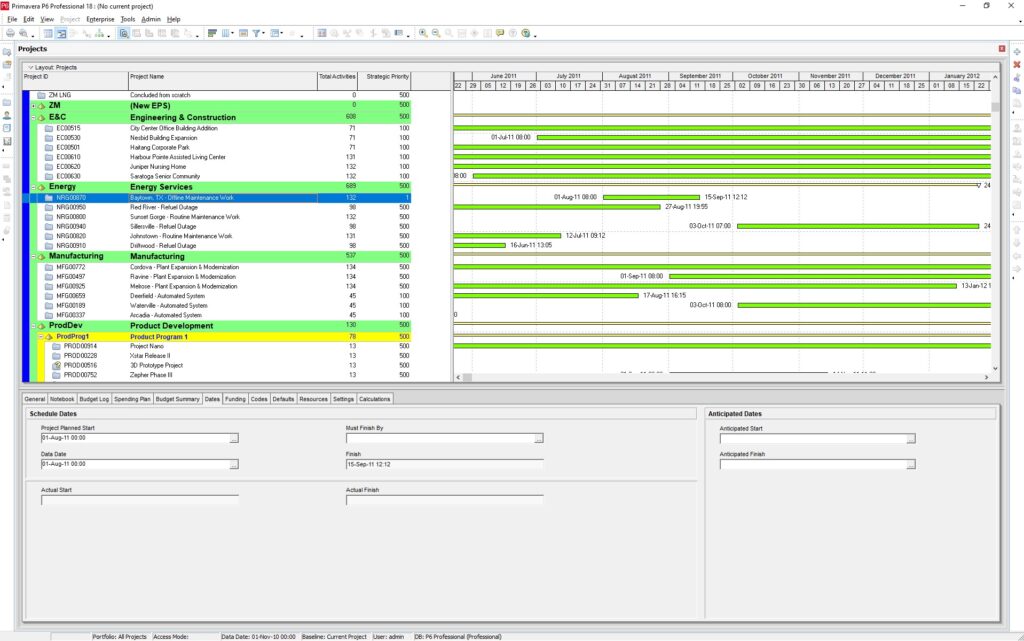Script
Hello everyone, welcome to my channel, in this series we’ll talk about how to make planning and project scheduling from the start of the project to project close, using Project management best practices techniques, here are the first ten steps to start building
your project schedule, as you all know Each project is unique, this means that you should be ready to tailor your approach to fit with your organization, stakeholders, project type, scope, and criticality Now read all project documents, start with project charter, project statement, and project scope of work, look for requested project design specifications and general requirements, look into drawings as lot of requirements might be mentioned only in drawings and you may not find them in specs. After reading the project documents, start to recognize project deliverables what are the intended outcome of this project, make a list of them, and what are the exclusions, constraints, and project assumptions, here try to understand the owner and project management point of view about how is this project going to be done Try to understand the schedule format and expectations, is it going to be time phase, area, or group of deliverables oriented, as this will help you to put in mind how you are going to build this schedule. Now after you feel that you know the project on paper, look for the project stakeholders, make a list of them, then communicate with them to make sure that you all share the same vision and expectations of the scope and outcome of this project, Now you feel that you know the project on paper and fully understand the scope and project’s outcome, it’s time to start to talk to the project management team and contractors about the project execution plan process which depends very much on the model and role of your organization and your project management team, there are too many models.
Are you on the owner’s side, or the contractor’s, or sub contractor. With either one of them your role is to make a good schedule, so you should fully understand how this project is going to be executed, the priorities, intended potential suppliers and the plan sequence, Then talk to the potential suppliers, to understand intended procurement plan, time frames, are the procured materials or services supplied domestically or internationally as time impact your schedule very much, and you should be aware of supply chain and potential risks impact.
Now you are fully aware of the scope, deliverables, execution, and procurement plans, you should work to define the project’s milestones, with these milestones will come the anticipated dates which should fit with the contractual and project charter’s dates, those milestones you’ll use them later in putting overall project’s time frame, but you should also work to define anticipated constraints, which their sources might vary very much, like contractual, weather, environment, availability, … etc. also these will lead you to define potential risks and uncertainty, and their potential impact on your project, we will talk later about risks types and probabilities, and how to deal with them, at this point you should gather as much information as you can from communication with stakeholders, and looking into lessons learned and past experiences in your organization.
Now you have enough data to start to put together what you gathered as a time frame, from project start to project close, going through different milestones for each of procurement or execution processes, taking in consideration as much as possible anticipated execution times and constraints on a very high level and not going into details, this time frame should make sure to fit the whole project scope into, and meets with all contractual commitments.
After having the project’s time frame with milestones and constraints all established initially, we are going to start putting the schedule, which will break the execution and procurement’s plans into tasks or activities with durations, (we’ll talk in details later on about these processes), these activities will be grouped relatively into layers of work packages and Work Breakdown Structure, WBS, In most cases we don’t have enough details to put the whole detailed schedule together in the beginning, so we start with high-level schedule, then we mostly use an iterative scheduling technique called Rolling-wave planning which is the process of project planning in waves as the project proceeds and later details become clearer; so we add details to WBS nodes once detailed data becomes available, which makes the schedule dynamic and evolving with project progress.
Here we also need to define project’s work calendars which are going to be used in the scheduling tool, these calendars will tell the scheduling tool how many hours the project is going to work every work day, every week, and every month, they’ll define work days, weekends, and holidays, these calendars will let the scheduling tool to be able to calculate the tasks duration and accordingly the project duration from start to project close, we will explain in details the calendars and how to assign them, calculate project’s CPM, when we explain Primavera P6 and MS project software scheduling tools, each software has its own characteristics in calculating the project, but both of them is the same in principle.
Now its time to put initial high level schedule plan using one of the scheduling tools, like Primavera P6, or MS project, there are too many different software available for use in the market, but through this course we are going to explain both the Primavera P6 and MS project, each one of them has it’s own pros and cons, remember that choosing the scheduling tools depends very much on your needs, the project complexity, and the details wanted of the schedule to reach, After you put together the initial schedule, discuss it’s feasibility with your project management team, and stakeholders, make sure that this high level schedule contains all project’s scope, meets milestones, and takes in consideration project constraints and risks impact, Always remember that a good practice in project scheduling depends very much on good communications with all stakeholders internal (within your organization) and external (all parties that has an interest in the project and can either affect or be affected by the project), so your role is to understand their visions for the project and make sure that they are aligned with project scope and contractual commitments, Also make sure to take notes of anticipated constraints and risks, and make sure that they are well considered in your schedule.
Thank you for watching this video, if you liked it please hit like and subscribe to my channel as more contents will be added to this series, if you have any suggestions or questions please leave them in the comments section below and I promise to respond, thanks again for watching until next time


